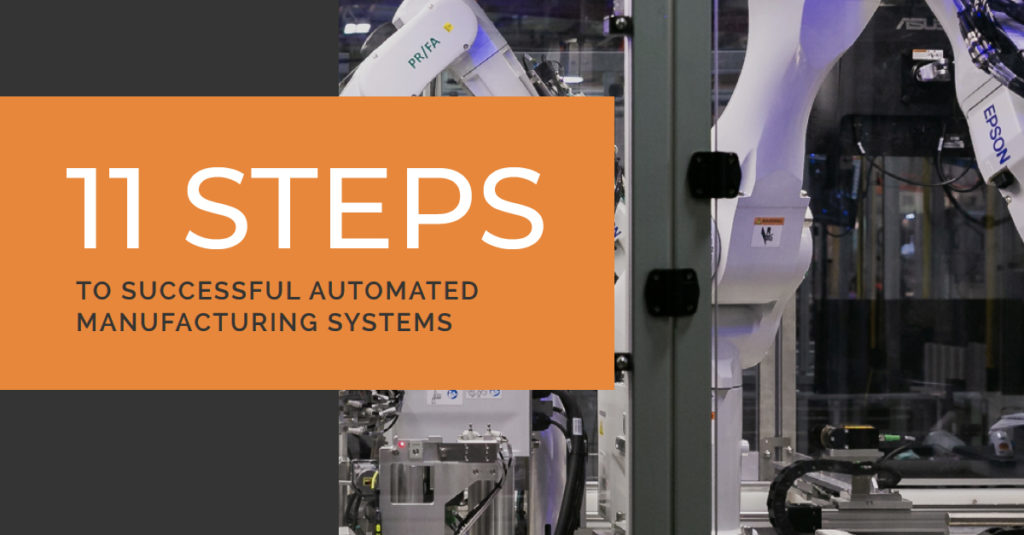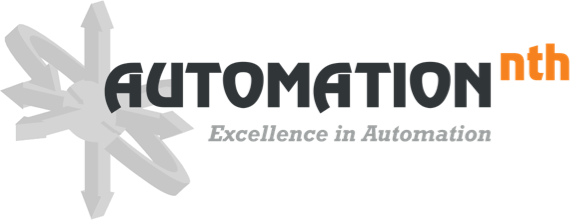
This is the fourth post in the series of 11 steps to follow to achieve success in automated manufacturing systems. If you’re new to this series, you can start with the first step: When to Automate.
In this post, we’re covering Step 4—How An Automation Architect Selects an Equipment Supplier.
- When to Automate
- Where to Start
- Who Should Be Involved
- How an Automation Architect Selects an Equipment Supplier
- The Contract
- Defining the Solution
- Project Execution
- Runoff & Factory Acceptance Test at Supplier
- Operator & Maintenance Training
- Installation, Site Acceptance Test & Production Start-Up
- Continuous Improvement
To get all 11 steps together in an ebook, fill out the form below and we’ll send it to you!
Step 4: How an automation architect selects an equipment supplier
Automationnth is an “architect of automation” for its customers. Similar to a building architect, an automation architect partners with its customer from initial concept all the way through project completion to ensure that the vision becomes reality and objectives are met.
To support customers throughout their automation journey, Automationnth created a “Certified Automation Partner” program to qualify automation suppliers through a rigorous assessment process. This evaluation scores suppliers on subjects such as Project Delivery, Quality Management, Risk Management, Schedule Management, Information Systems, Financial Health, and Training.
Automationnth helps identify and select the best Certified Automation Partner to build the equipment. If appropriate, Automationnth can provide turnkey automation by pairing its controls engineering and project management expertise with the mechanical capabilities of a Certified Partner. Depending on the situation, Automationnth can either play the role of prime or be a sub to a Certified Partner.
This unique model provides the following benefits to manufacturers:
Capacity
Rapidly scale up staffing with boundless capacity from CAPs
Flexibility
Can engage partners with specific areas of expertise or physical location
Speed
Respond quickly to customer needs and schedule requirements
value
CAPs enable Automationnth to maintain low overhead and competitively quote mechanical components
The process Automationnth uses to select a Certified Automation Partner for a specific project usually follows these steps:
- Assess the skills and experience needed to deliver the URS and concept that was chosen in Step 2: “Where to Start“
- Consider all Certified Automation Partners and determine which ones are most capable and cost effective to meet the project objectives. The primary criteria used in this step are:
- Trust in the supplier and their team
- Project size. Really large automation companies are unlikely to be cost competitive on small projects. Small automation companies don’t have the capacity to handle large projects.
- Project schedule. Is the supplier too busy or resource constrained to meet the schedule? Smaller companies may be more flexible in their ability to meet an aggressive schedule, but they must have sufficient resources dedicated to the effort.
- Technical competence and experience with the specific process needed for automation
- Present the project requirements and specifications to the automation supplier(s)
- Get a quote from the automation supplier(s)
- Analyze the quote to ensure its pricing is fair and that all of the requirements were considered and likely to be met.
As automation experts with a wealth of experience in the machine building industry, Automationnth knows what a fair price is. If the automation suppliers provide a high quote, we question it to ensure the specs were properly understood, and if necessary we will find a different supplier. If desired, Automationnth can get multiple bids from suppliers.
After the final supplier selection is made, it’s important to develop a trusting partnership between the architect, builder, and end user. The builder should become an integrated part of the project team and viewed as a strategic partner.
It is also wise to select the system builder as early in the program as possible to do simultaneous engineering with the project team, even in the design stage. This early involvement can considerably reduce the amount of time it takes to get into production.
Perspectives on Automation
“How do you pick a partner? You must have somebody that has experience with a similar product, to shorten your learning curve. They must be financially sound, have the technical horsepower to answer questions and to solve our problems. Eventually, it becomes a personal choice of the one company that can best meet our job requirements and in our time frame.”
Product subassembly contract manufacturer
“We tell the vendors what we need to do, and then ask them for ideas and for questions. Eventually, we identify those two or three vendors that have experience in the direction we need to go. We select those on the basis of their capability in terms of project organization, engineering proficiency and manufacturing capability, and we ask them to make proposals. Finally, we pick one, and that vendor assumes total responsibility for the success of the system and for the quality and function of subsystems such as controls, feeders, transfers, electrics, etc.”
Consumer products manufacturer
“Getting a supplier who is a specialist in our type of operation is essential. We’ve been working with one builder on a project in which we have had to increase our capacity twice. Each time, the builder has come up with new ideas. For example, at first we specified a cycle time of 1200 parts an hour, but when one station went down, it all went down. We now have specified a system throughput of 900 an hour, and with queuing at the right places, we can depend on it. Result: a 20 to 30 percent increase in overall performance.”
Consumer products manufacturer
“We look for somebody that has project management skills – where they
can define the project from start to finish, with a person qualified to see the
project through, and to maintain constant contact with the project manager
at our plant.”
Consumer products manufacturer
